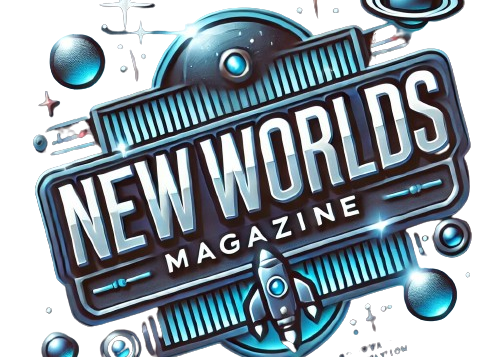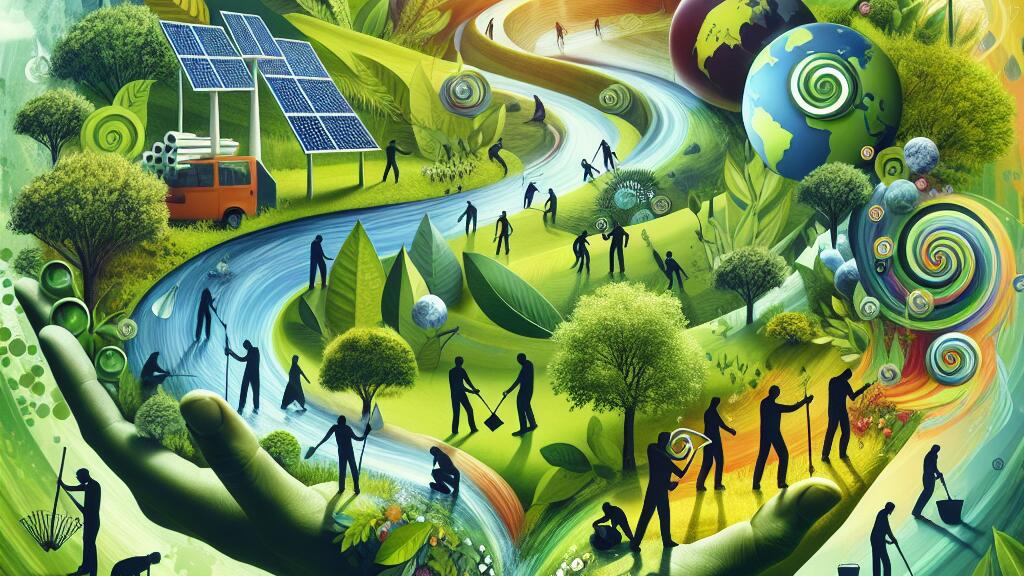Navigating the labyrinth of effective waste management strategies is crucial for curbing our environmental footprint. Across numerous cities and countries, a mosaic of approaches has emerged—each prioritizing recycling, composting, and the ever-elusive art of waste reduction. By refining collection systems and deploying cutting-edge sorting technologies, these strategies weave a tapestry that enables the efficient recovery of materials; this can dramatically shrink the mountains of refuse carted off to landfills.
Yet it’s not just about logistics—the pulse of public awareness campaigns beats strongly here, galvanizing responsible consumption habits while rallying community engagement in recycling efforts.
But wait! The horizon gleams with innovation as zero-waste programs take center stage—a bold endeavor to obliterate waste altogether. Imagine a world where products are ingeniously redesigned so their components can be reused or repurposed endlessly! This ambitious vision thrives on collaboration among government bodies, businesses, and local communities alike—creating fertile ground for sustainable practices to flourish.
Moreover, investing in education coupled with robust infrastructure for adept waste management cultivates a resilient ecosystem that harmonizes beautifully with our overarching quest for environmental sustainability.
Reducing Landfill Waste Through Recycling
Recycling, oh what a pivotal player in the grand scheme of waste management! It dances deftly around the concept of landfill reduction—transforming those cast-off materials into treasures anew. Picture this: paper, glass, metals, plastics—all swirling together in a vibrant ballet of repurposing. By reining in our appetite for virgin resources, recycling doesn’t just save energy; it orchestrates a symphony that lowers greenhouse gas emissions to boot! This isn’t merely about making space—it’s about nurturing a circular economy where materials find new life and leap back into production cycles with exuberance.
In myriad communities across the nation, comprehensive recycling programs are sprouting up like wildflowers after spring rain. They beckon residents and businesses alike to join the cause—a rallying cry for engagement! Educational campaigns burst forth with vivid messages on why recycling matters, while offering practical tips on how to sort effectively. As more individuals roll up their sleeves and dive headfirst into these efforts, recovery rates soar sky-high—leading to significant cuts in waste generation. These initiatives shine as beacons of environmental stewardship—a testament to society’s commitment to sustainable practices thriving amidst challenges!
Water Conservation Techniques
Water conservation techniques—oh, how vital they are in this age where demand skyrockets like a rocket launching into the cosmos! Picture this: rainwater harvesting—a brilliant strategy that lets individuals and communities scoop up those precious droplets from the sky, storing them away for later use. It’s like capturing nature’s bounty while taking a step back from traditional sources that often leave us parched.
And then there’s xeriscaping, an enchanting approach to landscaping that champions drought-resistant plants. Not only does it drastically cut down on water usage, but it also transforms gardens into lush paradises with minimal effort. What could be more delightful than flowers blooming without guzzling gallons of H2O?
Let’s not forget about smart irrigation systems—they’re practically wizards of water management! These high-tech wonders deliver just the right amount of moisture based on real-time data—no more overwatering or underwatering; it’s precision gardening at its best!
Education is a linchpin in all this—a crucial element sparking change among people everywhere. When folks understand the gravity of reducing water waste, they might just fix those pesky leaks or swap out their old appliances for efficient ones. Imagine entire communities embracing these practices as part of everyday life!
Integrating water-savvy strategies into community planning can usher in an era of sustainable management practices galore! By putting these methods front and center, regions stand to bolster their resilience against shifting climates while safeguarding our most treasured resource—the lifeblood we all depend upon. Who wouldn’t want to join such a noble cause?
Methods for Efficient Water Use
Water, that precious liquid lifeblood, must be wielded wisely if we are to safeguard our sustainable resources—whether in the bustling heart of urban jungles or the sprawling expanse of farmland. Picture this: smart irrigation systems spring into action, armed with sensors that dive deep into the soil’s moisture levels. With a flicker of algorithms and a whisper of technology, these marvels adjust watering schedules on-the-fly based on real-time data, dramatically slashing water waste in both gardens and fields alike. And let’s not overlook rainwater harvesting! What a brilliant strategy it is—to capture those fleeting droplets from the sky and store them up for later use in irrigation or other non-potable endeavors.
But wait—there’s more! Consider low-flow fixtures infiltrating our homes and businesses like stealthy champions of conservation. Think faucets that sip rather than gulp, showerheads that refresh without drowning us in excess, toilets designed to flush away only what’s necessary. It’s all about minimizing consumption while maintaining performance—a delicate balance indeed!
Then there are greywater systems—a genius twist where used water from sinks and showers finds new life as nourishment for plants instead of heading straight down the drain. Municipalities embracing this practice can catapult their water efficiency efforts forward. And let us not forget education; outreach programs shine an illuminating light on responsible water usage practices while equipping communities with practical tips for conserving this vital resource. The narrative continues to unfold—it’s a tapestry woven with innovation, awareness, and collective responsibility toward our most essential element: water.
| Method | Description | Benefits |
|---|---|---|
| Smart Irrigation Systems | Utilize sensors to measure soil moisture and adjust watering schedules in real-time. | Reduces water waste and promotes healthier plants. |
| Rainwater Harvesting | Captures rainwater for later use in irrigation and non-potable applications. | Conserves potable water sources and reduces runoff. |
| Low-Flow Fixtures | Install water-efficient faucets, showerheads, and toilets that minimize water use. | Decreases water consumption while maintaining functionality. |
| Greywater Systems | Reuses water from sinks and showers for irrigation purposes. | Maximizes water usage and reduces demand on freshwater sources. |
| Public Education Programs | Outreach initiatives to raise awareness about responsible water usage. | Empowers communities with knowledge and practical conservation tips. |
Urban Sustainability Projects
Cities are grappling with a whirlwind of challenges, all thanks to the relentless tide of rapid urbanization. The need for sustainable development has shot to the forefront, becoming absolutely vital for ensuring these bustling metropolises remain livable and resilient. Urban sustainability projects emerge as beacons of hope, striving to weave ecological wisdom into the very fabric of city planning and growth. These initiatives aren’t just about aesthetics; they’re laser-focused on boosting quality of life, slashing resource use, and fortifying communities against the looming specter of climate change.
Across urban landscapes, green infrastructure is rising like a phoenix from the ashes—strategies such as lush green roofs, vibrant urban forests, and smart permeable pavements are not merely trends but essential tools in stormwater management and air quality enhancement. They work wonders for biodiversity too! But wait—it’s not just about Mother Nature smiling down upon us; these projects bring social dividends by creating inviting green spaces where residents can gather and thrive. By embedding sustainability deep within their developmental DNA, cities arm themselves with better defenses against future adversities while nurturing a healthier habitat for every soul that calls them home.
Green Infrastructure in Cities
Urban landscapes grapple with an array of formidable challenges: climate change looms large, air quality often teeters on the brink, and biodiversity is slipping through our fingers. Enter green infrastructure—a beacon of hope amid this chaos. Imagine green roofs cascading with life, permeable pavements that drink in rainwater, and urban forests standing tall; these elements do more than just beautify—they serve as crucial lifelines for our environment. They orchestrate stormwater management like a maestro conducting a symphony, cool down the sweltering heat of concrete jungles, and purify the very air we breathe.
But wait—there’s more! Integrating nature into city planning isn’t merely about aesthetics; it ignites community spirit and bolsters public health. Think parks brimming with laughter and activity where neighbors become friends over shared sunsets—these green spaces are not just leisure locales but vital ecosystems filtering out pollutants while providing sanctuary to countless species. The economic benefits? Oh yes! Picture soaring property values alongside potential healthcare savings—all thanks to improved wellbeing from vibrant outdoor living.
Embracing green infrastructure within our bustling urban settings isn’t just a trend; it’s a bold declaration of commitment to sustainability and resilience for generations yet unborn. A future where cities don’t just survive but thrive amidst changing climates awaits us if we dare to dream—and act—green!
Corporate Social Responsibility (CSR)
In the ever-evolving landscape of modern commerce, businesses are increasingly awakening to the undeniable truth: integrating environmental sustainability into their operational strategies is no longer just a choice; it’s an imperative. With corporate social responsibility (CSR) at the forefront, companies are embarking on bold journeys, taking proactive strides to shrink their ecological footprints. The initiatives they champion often dance between ambitious shifts toward renewable energy sources and meticulous waste reduction measures—an intricate ballet that weaves in community-driven environmental projects as well.
But wait—there’s more! This multifaceted approach doesn’t merely polish brand reputation; it cultivates customer loyalty too. As consumers grow ever more discerning about the sustainability practices embraced by their favorite brands, companies that align with eco-friendly values find themselves basking in a glow of increased trust and admiration.
Yet this flourishing movement stretches far beyond immediate changes in operations. CSR initiatives serve as fertile ground for innovation within organizations, urging them onward to invest in cutting-edge sustainable technologies and resource-efficient practices. When business objectives harmonize with environmental goals, these forward-thinking entities play an essential role in larger societal efforts aimed at combating climate change—a daunting challenge indeed!
And let’s not overlook collaborations! Partnerships with non-profits and local governments amplify these green initiatives’ resonance like ripples spreading across a pond. Together, they create a rich tapestry of sustainability efforts that transcend conventional corporate strategies—ushering us all toward a brighter, greener future brimming with potential!
Business Contributions to Sustainability
A growing number of companies are diving headfirst into the realm of sustainable practices, recognizing just how crucial environmental stewardship has become in this age of heightened consumer consciousness. It’s not merely about doing what’s right; it’s a savvy move that allows organizations to polish their brand image and sharpen their competitive edge in an ever-evolving marketplace. Think sustainable sourcing, energy-efficient manufacturing techniques, and innovative waste reduction strategies—these are just a few avenues through which businesses can make a genuine positive impact on our planet.
Meanwhile, corporate social responsibility (CSR) initiatives are ramping up their focus on sustainability in ways that truly resonate. Firms are channeling resources into community programs aimed at conservation and education while forming alliances with environmental groups to bolster global efforts for change. By immersing employees in sustainability training and fostering a spirit of volunteerism, these organizations cultivate an ethos of environmental mindfulness that ripples far beyond the confines of the office walls—ultimately enriching society as a whole.
Future Trends in Environmental Sustainability
Emerging technologies are poised to revolutionize the landscape of environmental sustainability in ways that are both exhilarating and complex. Picture this: artificial intelligence and machine learning, those digital wizards, turbocharging resource management with uncanny precision. They’re not just crunching numbers; they’re ushering in an era where real-time monitoring of energy consumption and waste production becomes second nature. This capability allows for laser-focused interventions—think about it!—that can drastically shrink our environmental footprints like a well-tailored suit.
And let’s not overlook the strides made in renewable energy tech! Solar panels gleam brighter than ever before, while wind turbines spin with newfound efficiency, all while costs plummet. As these innovations reach maturity, they don’t merely promise to wean us off fossil fuels; no, they herald a future adorned with smarter, more resilient energy systems that could reshape how we power our lives.
Then there’s another fascinating trend bubbling up: corporate strategies intertwining seamlessly with sustainability practices. Companies are waking up to the reality that embedding environmental, social, and governance (ESG) criteria into their DNA isn’t just good ethics—it’s smart business! This shift is nudging organizations toward greener operations while holding them accountable for their ecological impact—a refreshing change indeed!
Moreover, consumers and investors alike are demanding transparency like never before. Businesses now find themselves compelled to lay bare their sustainability metrics or risk losing credibility—and customers! The emphasis on circular economy principles is gaining traction too; firms are increasingly crafting products and processes designed not only to minimize waste but also to optimize resource use and cultivate long-term ecological harmony. What a thrilling time to witness such transformative shifts unfold right before our eyes!
Emerging Technologies and Their Potential Impact
The relentless march of technology is undeniably forging new pathways in the realm of environmental sustainability across a myriad of sectors. Picture this: artificial intelligence, big data analytics, and the Internet of Things (IoT) swirling together like a storm to revolutionize how we monitor and manage our precious resources. It’s fascinating—AI algorithms deftly sifting through data to unveil energy consumption trends, empowering us with the tools for smarter demand management. Meanwhile, smart sensors embedded within urban landscapes work their magic, optimizing energy and water usage on-the-fly, slashing waste in ways once thought impossible.
But wait—there’s more! The dawn of innovative technologies in renewable energy shines brightly as advanced solar panels and cutting-edge wind turbine designs leap into action, making sustainable sources not just a dream but an accessible reality. And let’s talk about scalable energy storage solutions; they’re tackling one of the most vexing challenges plaguing renewables: intermittency. As these groundbreaking technologies continue their thrilling evolution, we stand at the brink—a future where our dependence on fossil fuels could dwindle significantly.
And don’t overlook innovations like carbon capture and storage—they’re stepping onto the stage with promises galore to curb greenhouse gas emissions from industrial processes. This isn’t just progress; it’s a bold stride towards crafting a more sustainable future that beckons enticingly on the horizon!
- Greater efficiency in resource management leads to reduced costs for businesses and consumers.
- Enhanced accuracy in forecasting energy demand can stabilize energy grids.
- Improved data collection and analysis enables proactive maintenance of infrastructure.
- Increased public awareness on the importance of sustainability through technology.
- New job opportunities emerge in the technology and sustainability sectors.
- Collaboration among industries, governments, and tech companies fosters innovation.
- Long-term environmental benefits can significantly improve public health and ecosystem resilience.
Conclusion
Environmental sustainability stands as a pivotal cornerstone in the mosaic of global initiatives and strategies, weaving an intricate tapestry of collective action. Nations, communities, and enterprises are uniting in a vibrant dance towards practices that place the health of our planet at the forefront. The strides made in waste management, water conservation, and urban sustainability paint a picture brimming with potential for substantial transformation. Recycling programs twinkle like stars against the backdrop of green infrastructure—bold testaments to an unwavering commitment to shrink our ecological footprints.
Yet within this framework lies the undeniable weight of corporate social responsibility—a thread that cannot be overlooked. Companies are awakening to their vital role in nurturing sustainability through inventive practices and active community involvement. As we gaze into the future landscape of environmental sustainability, it unfolds like an evolving storybook filled with emerging technologies; these innovations bring forth new tools and strategies poised to tackle persistent challenges head-on. Such advancements will undoubtedly steer us as we navigate through the labyrinthine complexities surrounding environmental issues—an ever-changing narrative calling for adaptability and foresight.







